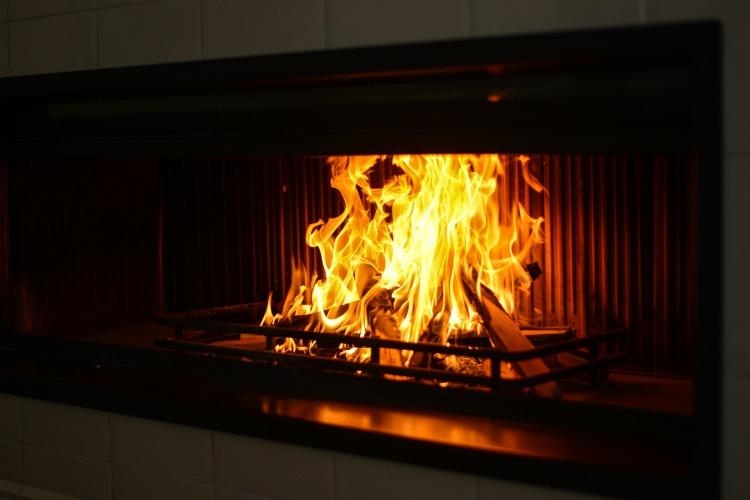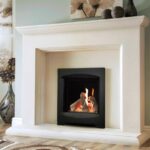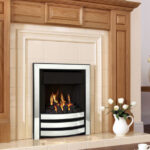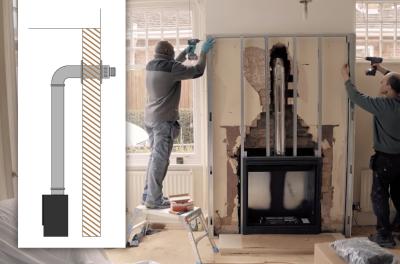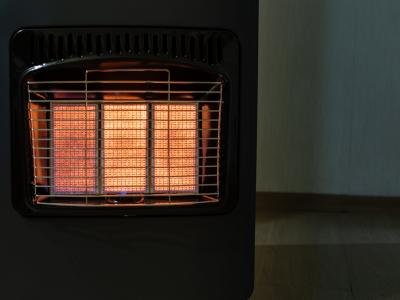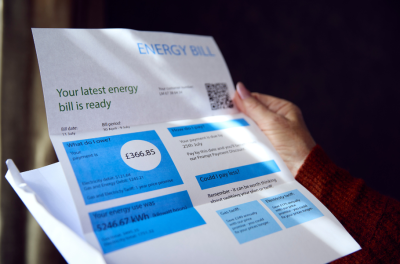We use cookies to improve your experience and our business. See our privacy/cookie policy or continue browsing to accept our use of cookies. View our cookie policy.
Fireplace Safety Tips & Advice - Gas, Electric & Wood Fires
Having a fireplace in your home is wonderful, being able to curl up in the warm when it’s cold outside - however, there are certain safety aspects that you need to be aware of.
Most of the time, you won’t have to worry about fireplace safety as some of it is common sense, and the rest usually takes care of itself as long as the fire is installed correctly and well maintained.
Despite that, it’s best to be well aware of all the potential dangers having a fire at home can pose and how to prevent them occurring. In this guide, we’ll look at fireplace safety tips for electric, gas and solid fuel fires, as well as safety advice for your chimney.
Gas fireplace safety tips
If you have a gas fire or are looking to install one, then there are a few key safety issues you need to be aware of:
Installation
By far and away the most important thing when installing a gas fire is that it’s done by a registered Gas Safe Register qualified engineer. They will know exactly how it should be fitted into your mains gas supply - and if you don’t get it fitted properly then it can invalidate your house insurance.
You should also ensure your gas fire is serviced annually, again by a registered engineer, to make sure it’s still safe and working correctly.
Carbon monoxide
One of the most important issues with gas fires is carbon monoxide, an odourless, poisonous gas that can leak out of poorly fitted, old or damaged gas fires.
Symptoms of carbon monoxide poisoning include nausea, headaches, lethargy and dizziness - these might not sound too serious, but CO poisoning can be deadly.
It can be difficult to notice if you have a carbon monoxide leak, which is why you should always have a carbon monoxide detector in any room with a gas appliance.
Signs of a CO leak from a gas appliance include stains, soot or discolouration on or around the boiler, fire or water heater. You should also check any gas flames in your house that normally burn blue, such as the boiler pilot light - if they’re burning yellow or orange instead, then you may have a carbon monoxide leak.
Is it safe to leave a gas fire burning at night?
We’d never recommend leaving any fire burning overnight, regardless of what type it is. The main problem with leaving a gas fire on at night is the threat of carbon monoxide poisoning, so it’s best just to switch off to be safe.
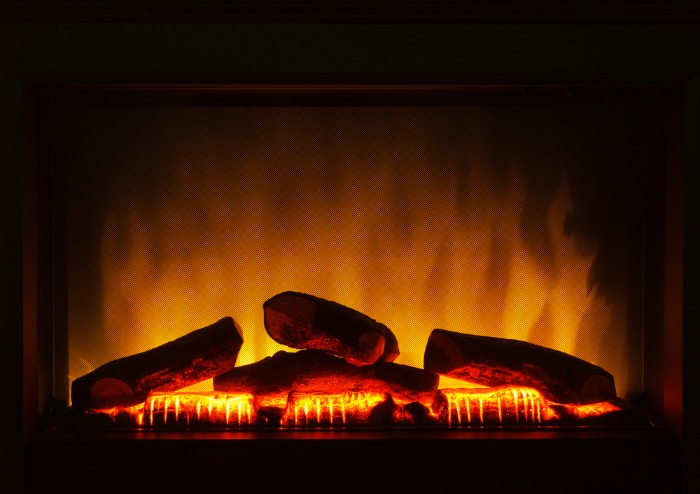
Electric fireplace safety tips
Electric fires are very simple to install and use and don’t need a huge amount of maintenance. However, it’s worth bearing a couple of things in mind.
The issues likely to arise with an electric fire are similar to those of other electrical appliances. Here are some electric fire safety tips:
- Check for a British or European safety mark - all new electric fires should have one of these - ours do, of course!
- Check for worn or frayed wiring - Check any connections (into the plug, into the back of the fire, etc) to make sure nothing is damaged. Also check the socket for scorch marks.
- Don’t overload plug sockets - It’s never good practice to try and plug too many appliances into one socket. We’d recommend plugging straight into the wall and not to use an adaptor or extension lead.
- Never use a timer plug - Some electric fires have built-in timers, which are safe to use, but plugin adapter timers, auto timers and IoT timers should never be used with electric fires.
- Unplug when not in use - Not only is this good for the environment and your energy bills, but it’s safer to do so as well.
- In an emergency - If you do have an electrical fire, pull out the plug or switch off ONLY if safe to do so, do not throw water on it, and don’t take any risks. The official line from the fire service is ‘get out, stay out and call 999’.
Solid fuel fireplace safety tips
If you have a fireplace that burns solid fuel (usually wood) then take into account the following:
What wood to use
Always try and use dry and well-aged wood. Oak is a good choice as it’s dense and won’t release nasty by-products like creosote that resinous woods like pine can do. Damp wood smokes more and causes more soot to build up in the chimney. Store logs and kindling in a dry environment, under cover if it’s outside.
Don’t burn wood that’s been treated with anything, and try to resist throwing any rubbish on there as well.
Smoke and CO detectors
You should install both smoke and carbon monoxide detectors in the same room as your fireplace. They should be checked once a month and batteries should be replaced at least once a year.
Can you leave embers burning in a fireplace?
No - If embers are still burning then the fire is still going, and you should never leave a fire unattended. Should any embers find their way out of the fire and onto the surrounding area then it could cause a fire.
Always fully extinguish the fire before going to bed or leaving the house.
Fireplace rugs
If you don't have a hearth, or only a small one, then it might be wise to consider a fireplace rug. These are fire-resistant rugs that sit in front of your fireplace that can protect your carpet from burning if any embers or sparks happen to leap from the fire onto the floor.
Keeping the flue open
Before lighting a fire, ensure the flue or damper is open and clear. If it’s not then smoke can’t escape up the chimney, meaning it will inevitably fill the room. Keep it open until the fire has fully gone out, including until the embers have stopped burning.
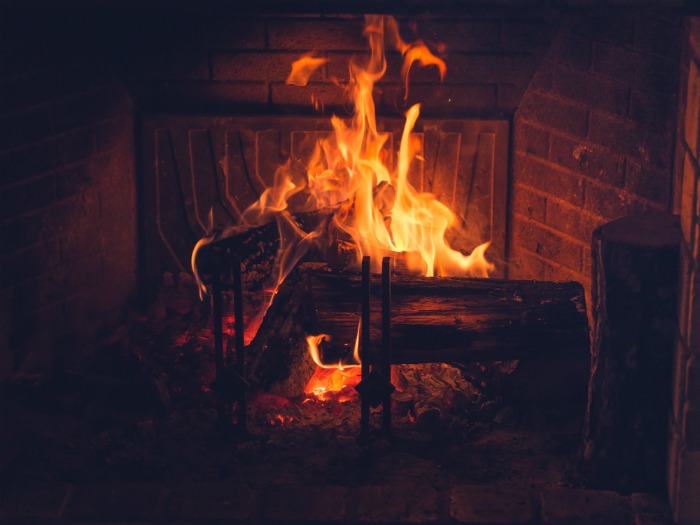
Chimney safety tips
If you have a working chimney, then there are further safety considerations that need to be taken into account.
You should get your chimney checked and cleaned by a professional at least once a year to ensure it’s working effectively and isn’t posing a safety risk. Chimneys can become blocked, usually with soot, tar and bird nests, which increases the risk of chimney fires.
Hire a professional chimney sweep to clean your chimney, and that includes if you have a gas or oil fuelled fire. If you’re burning coal or wood, then you should have it cleaned every few months when in use, and once a year for gas, oil and smokeless fuel.
Fireplace safety for babies and children
Those with children have a few other safety issues to think about with a fireplace:
- Safety screens should be installed around all types of fire to greatly reduce the risk of them burning themselves.
- A stepped hearth should be covered using a hearth cushion to soften those sharp edges. A flat hearth can be covered using a soft mat if you’re worried about them falling on it.
- Make sure your children can’t get hold of any fireside tools and accessories.
- If you have a door on your fireplace, ensure it has a lock.
If you have any questions about any aspect fireplace safety, including how to safely install a fire in your home, don’t hesitate to get in touch.
[related_products is_auto_added="1"]direct fireplaces
Latest posts by direct fireplaces (see all)
- Which Electric Fireplace Gives the Most Heat? - February 5, 2021
- Retro Fires and Retro Stoves for the Home - January 22, 2021
- Do I Need a Fireplace in My New Home? - January 20, 2021

